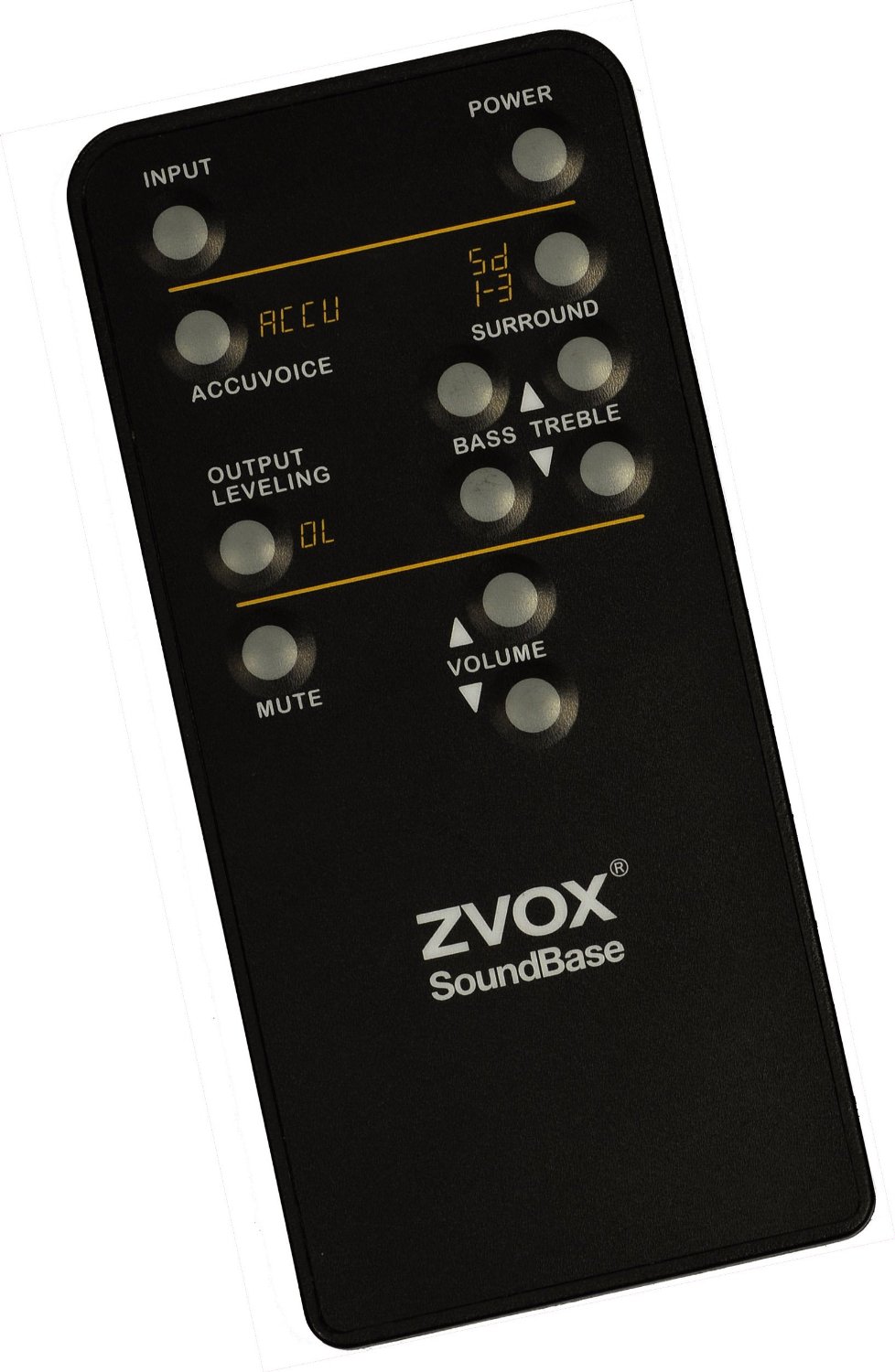Tom's Guide Verdict
The Zvox SoundBase 570 boosts dialogue well and delivers booming bass without a separate subwoofer.
Pros
- +
Robust bass
- +
Clear dialogue and vocals
- +
Extensive connectivity options, including Bluetooth
Cons
- -
Less useful with a wall-mounted TV
- -
Complex sound can get muddled in the mix
Why you can trust Tom's Guide
The latest trend in home-theater audio seems to be the "sound base" — essentially a deep soundbar. A sound base — or sound plate, as some companies call it — aims to mate richer low-end effects with the simplicity of a one-piece soundbar. Zvox knows all about the idea; the company has been building that type of speaker since 2004, way before it gained widespread popularity.
Experience pays off. With its SoundBase 570, Zvox delivers better bass than most soundbars with wireless subwoofers. If you love the low end — and have the right setup — the 570 will be an appealing alternative to the standard soundbar.
Design
Looking at it straight on, you may not notice much difference between the SoundBase 570 and a standard soundbar. At 3.5 inches tall and 30 inches wide, it appears a bit smaller than most of its competitors. But because the SoundBase 570 integrates a 5.25-inch subwoofer into the unit, it's much deeper — 14.5 inches, compared with 2 inches for the Sony HT-CT370 and 3.15 inches for the Vizio S4251w-B4.
This small, deep design is great if you have your TV on a stand, and the stand isn't much wider than the 30-inch width of the 570. (Zvox offers wider models you can get if you have a larger TV.) I placed a 42-inch Panasonic HDTV on top of the 570, and it rested securely, but I wouldn't have felt comfortable with a larger set. You can place a TV up to 110 pounds on top of the 570.
If you have your TV mounted on a wall, Zvox recommends placing the 570 on a flat surface near the TV. But if you can't place the SoundBase directly below the TV, the sound and the picture would come from two different spaces, in which case a standard soundbar and wireless subwoofer may be a better option.
MORE: Our Favorite Sound Bar Speakers
While its black exterior looks basic, the 570 offers several appealing design features. For example, it includes a display to show you the volume, current input or surround-sound mode, but when you are done adjusting these settings, the display shuts off, so it doesn't distract from what you're watching on your TV. The 570 also includes a 3.5mm input on the front, for a wired connection to a mobile device — much more convenient than running a wire to the back.
Get instant access to breaking news, the hottest reviews, great deals and helpful tips.

Next to the 3.5 mm jack, you'll find power, volume and input buttons. On the back, the Zvox features plenty of connection options: two optical digital, two analog stereo and one coaxial digital. For music, you can also connect via Bluetooth.
Setup and Use
Once I positioned the TV and SoundBase on top of a media center, I had no problems connecting the 570 to my Panasonic TV via the optical digital connection.

The SoundBase 570 comes with a remote control with functions to control the input, surround-sound modes and volume, as well as treble and bass. You can teach your TV remote to control the 570's power and volume, but I found it handy to keep the Zvox remote nearby to adjust the sound.

Each of the three surround-sound modes affects the sound significantly. Mode 1 boosts the dialogue and minimizes surround effects, Mode 2 balances dialogue and surround effects and Mode 3 places prominence on surround sound and less emphasis on vocals. I found I liked Mode 1 for TV shows and Modes 2 or 3 for movies. The remote also includes an "Accuvoice" option, which brings voices way out front in the mix. I found it too trebly, but it did make it easy to hear dialogue.
MORE: Best Bluetooth Speakers Available Now
The 570 also includes Bluetooth for listening to music from a mobile device or computer. It paired quickly with iOS and Android devices. However, each time I turned off the speaker, I had to manually reconnect when I placed the 570 into Bluetooth mode; it didn't re-establish a connection automatically, as most Bluetooth speakers do.
Audio Performance
For both video and music, the SoundBase 570 excelled in vocals and bass. Narration during Ken Burns' The Roosevelts: An Intimate Story sounded clear and resonated well. Likewise, the chatter of Joe Buck and his fellow announcers during the World Series rose above the roar of the crowd. The deep bass worked especially well during action movies, creating a tactile rumble when the Batmobile chased the Joker in The Dark Knight.

However, at times, the 570 suffered from too much of a good thing. During the lobby scene in The Matrix, when the sound is rich with music and gunfire, I had a hard time distinguishing all the separate elements.

While playing music, the 570 showed off its subwoofer on the thumping bass line from Flying Lotus' "Do the Astral Plane," and really rattled the media center during the bass break on the Beastie Boys' "Shake Your Rump." On the other end of the spectrum, Norah Jones' vocals popped brightly above her piano on "Come Away with Me."
But the speaker produced little separation between the instruments on Led Zeppelin's "What Is and What Should Never Be," and the left-right swirling of Jimmy Page's guitar was lost in the mix. The 570 doesn't offer a direct sound mode — it applies surround sound to everything — which may have been the cause.
Bottom Line
For the sounds that TV speakers struggle with most — bass and dialogue — the Zvox SoundBase 570 offers great improvement. Although it struggles with complex mixes and separating sounds, the 570 delivers better overall audio than soundbars with wireless subwoofers. If you have a wall-mounted TV, a standard soundbar like the Sony HT-CT370 or Vizio S4251w-B4 would make more sense. But if your TV is on a stand or mounted with space below to place the speaker, the SoundBase provides an enticing mix of features and sound quality.
Specs:
Equipment: Five 2-inch drivers, 5.25-inch subwoofer
Size: 30 x 14.5 x 3.5 inches
Weight: 19 pounds
Inputs: 2 analog stereo, 2 optical digital audio, coaxial digital audio, 3.5 mmanalog audio, Bluetooth
Follow us @tomsguide, on Facebook and on Google+.

Michael Gowan is a freelance technology journalist covering soundbars, TVs, and wireless speakers of all kinds of shapes and sizes for Tom’s Guide. He has written hundreds of product reviews, focusing on sound quality and value to help shoppers make informed buying decisions. Micheal has written about music and consumer technology for more than 25 years. His work has appeared in publications including CNN, Wired, Men’s Journal, PC World and Macworld. When Michael’s not reviewing speakers, he’s probably listening to one anyway.

